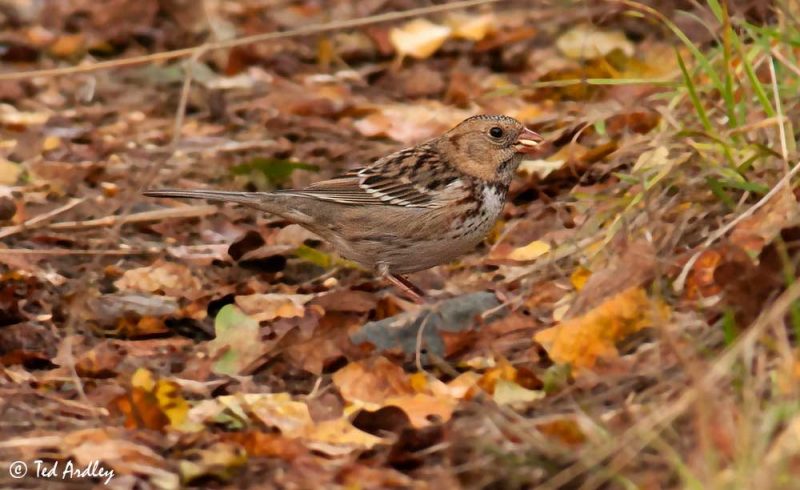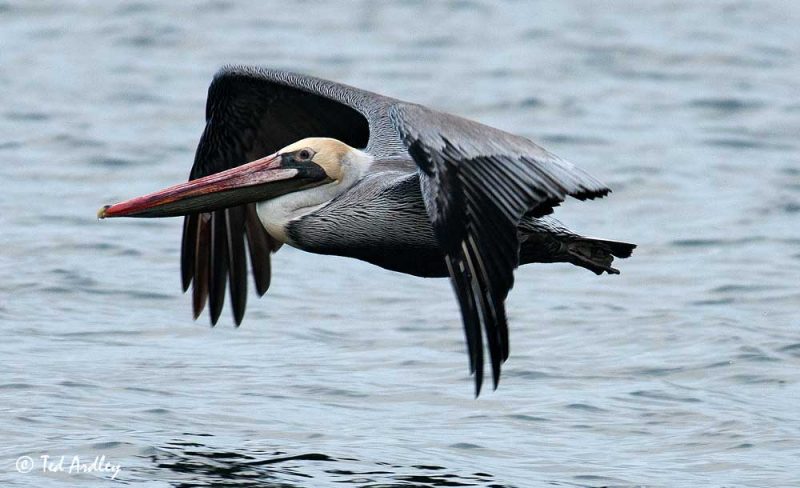OK – I’m not a hardcore lister by any stretch of the imagination (I’ve finally just broken 200 on my restarted BC list) but sometimes unexpected birds are a good excuse for a road trip. I’ve been fortunate that the extremely rare citrine wagtail is a mere five minutes away from my house, and perhaps adding that bird to my North America ABA list was the spark to twitch after birds that are a little further afield. If it’s close enough to see conveniently, I might just make the effort.
Such was the case this weekend—three birds that I “needed” for my list were showing well in Victoria, British Columbia, a mere three hour drive south. According to the BCVIBirds Yahoo group a blue-gray gnatcatcher (Polioptila caerulea) was making predictable appearances at Tuesday Pond at Swan Lake Nature Sanctuary, a Harris’s sparrow (Zonotrichia querula) was reliable at Hyacinth Park and brown pelican (Pelecanus occidentalis) numbers seemed to be increasing daily on the appropriately named Pelly Island in the middle of Victoria Harbour.
After overnighting a friend’s house I headed to Swan Lake first to see if I could locate the blue-gray gnatcatcher. The typical winter range of this bird is southern United States and Mexico, and even in the summer it rarely strays further north than northern California on the west coast. That being said, this species showing up in British Columbia isn’t unprecedented—there have been 12 records in southern British Columbia, of which 5 were in Victoria.
At Swan Lake, I ran into another birder who was looking for the gnatcatcher without success. We were soon joined by two other birders from the lower mainland who were also there to see the elusive gnatcatcher.
I didn’t find the gnatcatcher on my first pass down the path to Tuesday Pond so I tried a little further on while the other birders headed in the opposite direction thinking that I might have been on the wrong path. I found the other end of the loop but it was too flooded to carry on much further so I backtracked back to the first trail I had tried. This path was flooded too, but with gumboots on I was able to get a bit further in and at the far end of the trail the gnatcatcher appeared as if on cue, right where it was reported to be. Always good to have gumboots at this time of year!

Photograph © Ted Ardley
I let the others know that I had found the bird (I could hear them on the far side of a line of trees) and we all stood and enjoyed the show. The blue-gray gnatcatcher displayed nicely giving us great views but a little too far away for me to get a decent photograph with my longest lens. With the first bird on my “to do” list ticked it was time to move on to the Harris’s Sparrow. I bid farewell to Roger and Andrew and headed back to the car.
Getting to Hyacinth Park was a little more challenging that I expected. I had a simple Google Map that I had printed off the day before and sort of figured I knew where I was going. What I didn’t count on was that even though it looked like McKenzie Avenue and Interurban Road intersect, McKenzie actually passes over Interurban. A couple of false starts, U-turns, and map checking later, I finally made it to the small park where the Harris’s sparrow was located.
The Harris’s sparrow, like the blue-gray gnatcatcher, is a ways out of its typical range. Usually found in the central part of North America, the Harris’s sparrow breeds in the central Arctic and spends the winter in south-central United States. This particular bird has been regular at this small urban park and was feeding with a mixed flock of sparrows including golden-crowned sparrows, white-throated sparrows and house sparrows.

Photograph © Ted Ardley
None of the birds seemed to be too disturbed by the regular traffic of cyclists, joggers, people walking dogs or parents pushing their kids through in strollers. They’d flush into the underbrush and then slowly re-emerge once things had calmed down. Again, it wasn’t possible to get close enough with my lens to get a good photograph, but I was content to simply watch the birds feeding in the old leaves at the edge of the path.
From here I headed to Fisherman’s Wharf to check out the brown pelicans that have been staking claim to Victoria Harb0ur. Much more common in the winter in southern California, these new arrivals have been putting on an incredible show. From Fisherman’s Wharf at Laurel Point one gets a great view of Pelly Island where they roost, and from where they venture out into the harbour to feed. I had some great looks through my binoculars and even got a spectacular fly-by as a juvenile cruised along just below the wharf. Amazing how big these birds are up close.

Photograph © Ted Ardley
It was great to spend a little time in Victoria birding—there always seems to be something unusual popping up in this southernmost part of Vancouver Island. We’re planning on taking a family trip later in the month and hopefully there’ll still be a few odd birds around. I did miss the palm warbler (Setophaga palmarum) at Panama Flats on this trip so it would be nice if it stuck around for a couple more weeks …
About the Photographs:
All photographs courtesy of Victoria photographer Ted Ardley and used with his permission. Check out Ted’s Flickr Photostream for more great images of these and other birds.
Getting There:
I started at Swan Lake which is fairly easy to access via McKenzie Avenue. Turn off McKenzie onto Rainbow Street. At the “T” intersection turn left onto Ralph Street and follow it to the parking lot of the Nature Sanctuary. The trail isn’t signed Tuesday Pond, but there is a marker for Outer Loop (?) Trail where it begins. Fairly flooded in December, rubber boots recommended.
From Swan Lake, I backtracked from Ralph Street, right onto Rainbow Street, right onto Sevenoaks Road, and then left onto Nelthorpe Street. This convoluted exit is necessary so that you can turn left onto McKenzie to take you to Hyacinth Park (no left turn possible at Rainbow and McKenzie).
Follow McKenzie toward the Pat Bay Highway and continue to Burnside Road West (if you cross the Trans-Canada Highway you’ve gone too far). Turn right onto Burnside and look for Marigold Road. Turn right onto Marigold which will take you to Interurban Road. Turn left onto Interurban, then right onto Hyacinth Avenue. This short road will take you to the parking area of the park. Search this area and particularly the pathway for the Harris’s Sparrow.
For the Fisherman’s Wharf – you’re on your own to get to downtown Victoria. Once there, follow Belleville along the waterfront and work your way through the maze of streets until you get to St. Lawrence Street (zoom into the Google Map for details). Rather than parking in the Fisherman’s Wharf parking area, continue to Erie Street and park alongside the road there—you should be able to get a spot and won’t have to pay for parking. The wharf at the far end of Fisherman’s Wharf (farthest from the parking area) has the best views of Pelly Island. Note that you’ll get good views from the Songhees Walkway on the opposite side of the harbour as well.
Location of the Gray-blue Gnatcatcher
Brown Pelican roost!
Location of the Harris's Sparrow